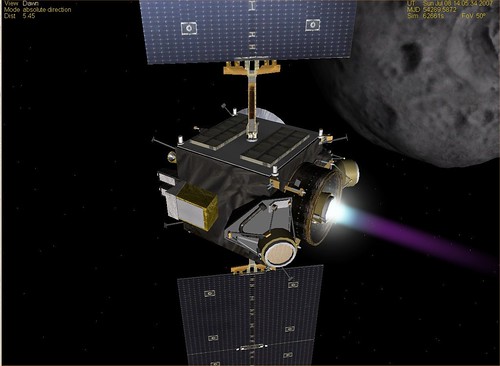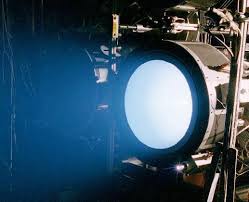Guys...
There is a clear STATEMENT OF INTENT behind this issue, by the people making the TNG-era films and TV shows. Sternbach, Okuda, etc, were directly involved with the day-to-day operations of these series and films. They created a definition of "impulse engines." Every TNG-era show was bound to follow that guideline. Some did so better than others, some played pretty fast-and-loose, but all were supposed to follow that guideline.
So, if you decide that "impulse" is inherently something totally different than THE PEOPLE MAKING THE SHOW INTENDED IT TO BE... you'd better have a completely
waterproof argument.
Otherwise, you're simply sayin "I know better than the artist does about his own art."
Now, where Treknology violates REAL science... this may be a sound thing to do. And yes, at various times and in various circumstances, Treknology was directly contradicted by real (and thus incontrovertable) physics issues.
In those cases, the challenge is to find a solution which most closely fits what's seen on-screen while still managing to fit in with known scientific principles.
That's not what you're arguing, though, it seems, Saquist. You're arguing that you, PERSONALLY, prefer it to be a "field drive."
Fine. You're welcome to thing that. But if you want anyone else to agree with you, you have to deal with the following:
1) Convince them that what they saw on-screen, and what the people who were making what was seen on-screen INTENDED, is less important than what you want them to believe.
2) Convince them that what you want them to believe makes more sense than what the "official" answer is.
Those are both real challenges. You've really failed to do either, so far, in my judgement.
The first is a BIG DEAL. You're basically saying that "the artist doesn't know his (or her) own work as well as you do." That is hard to say without coming off as simultaneously ignorant and arrogant. Yet, sometimes it's neither... since (as has been stated repeatedly) Trek (for example) is hardly 100% self-consistent, and hardly 100% accurate to "real" science (though it has a clear pretense of being so).
If it was "fantasy" and what was being presented as simply "magick" or "the Force" or whatever... there's no ground to critique it whatsoever. But since they're claiming to be "science-based," there's more room for valid criticism.
SO....
The real issue becomes #2 in this case. Is there a "more sound" scientific explanation?
Well, let me ask this... cut out every hint of "science fiction" from this argument, and simply look at REAL SCIENCE.
Is there such thing as a "field-drive?" Has anyone, EVER, built one? Is there any real science behind any concepts or theories associated with this idea?
Sure, there's plenty of "speculation," but the answer to the above is NO. THERE IS NO SUCH THING AS A FIELD DRIVE. We have not invented one, or even made a remotely reasonable "real science" description of how such a thing MIGHT work.
It all relies on "magick" concepts... even if that magic is defined by pseudo-science terminology rather than "eye of newt and tongue of frog" and so forth.
If you want to argue REAL SCIENCE, let's do so. I explained, VERY CLEARLY AND SUCCINCTLY, why certain jet-turbine-powered aircraft have visible exhaust plumes and others do not. It seems that you failed to grasp it entirely, but that's not my problem, its yours. If you question this, I recommend you take a few courses on aircraft propulsion systems, and even work on such systems in the course of your career. I have, as have several other frequent-posters to this BBS.
"Thrust" is based entirely on kinetic energy... the mass ejected, and the velocity of said mass. Temperature isn't really a concern. If you could accelerate propellant without introducing heat, that would be a perfectly valid means of propulsion. Today's systems almost universally involve the use of heat AS A METHOD OF ACCELERATION OF THE MASS. The heat, in other words, is a means to the end, not the end itself. Heat produces expansion, which provides the thrust, in the case of a jet turbine. The heat isn't really even desirable... for many, many reasons.
The reason that exhaust is visible IN SOME CASES is because the mass being ejected is at a sufficiently high temperature that it is "incandescent." This is, particularly for military aircraft, HIGHLY UNDESIRABLE. More recent aircraft have complex schemes for minimizing the heat signature of the aircraft (making it less detectable and more survivable in combat).
You showed a picture of an F-14 "Tomcat," during a carrier takeoff. The F-14 requires FULL AFTERBURNER for such an operation. Frankly, despite the "Tom Cruise" factor from "Top Gun," the reality is that the F-14 is a PIG for maneuvering and is really not capable of close-in dogfighting at all.
The F-14 had two major advantages...
First, the variable-configuration wings allow it to have a reasonably effective "takeoff" mode, plus a low-fuel-consumption "loiter" mode. The sole function of the F-14 is to fly CAP around a carrier fleet, typically in three sets of two orbiting the carrier group centroid.
Second, the F-14 carried a pair of systems which were the core of the "fleet defense" system... a very powerful long-range target-acquisition radar, and a very effective, very long range air-to-air missile. These two systems were designed to work together, and are useless without the other.
The point is that these six F-14s, orbiting the fleet, could detect, target, and destroy any incoming craft BEFORE they came into range. Shoot-first, kill-first... always the best way to survive.
But the F-14 was never intended to be "stealthy" and was never intended to be a dogfighter. It was nothing but a launch-platform for the Pheonix missile.
So, showing it burning off damned near half of its fuel load to get off the deck of a carrier isn't really a sound argument against what I said before, and am repeating now, is it?








